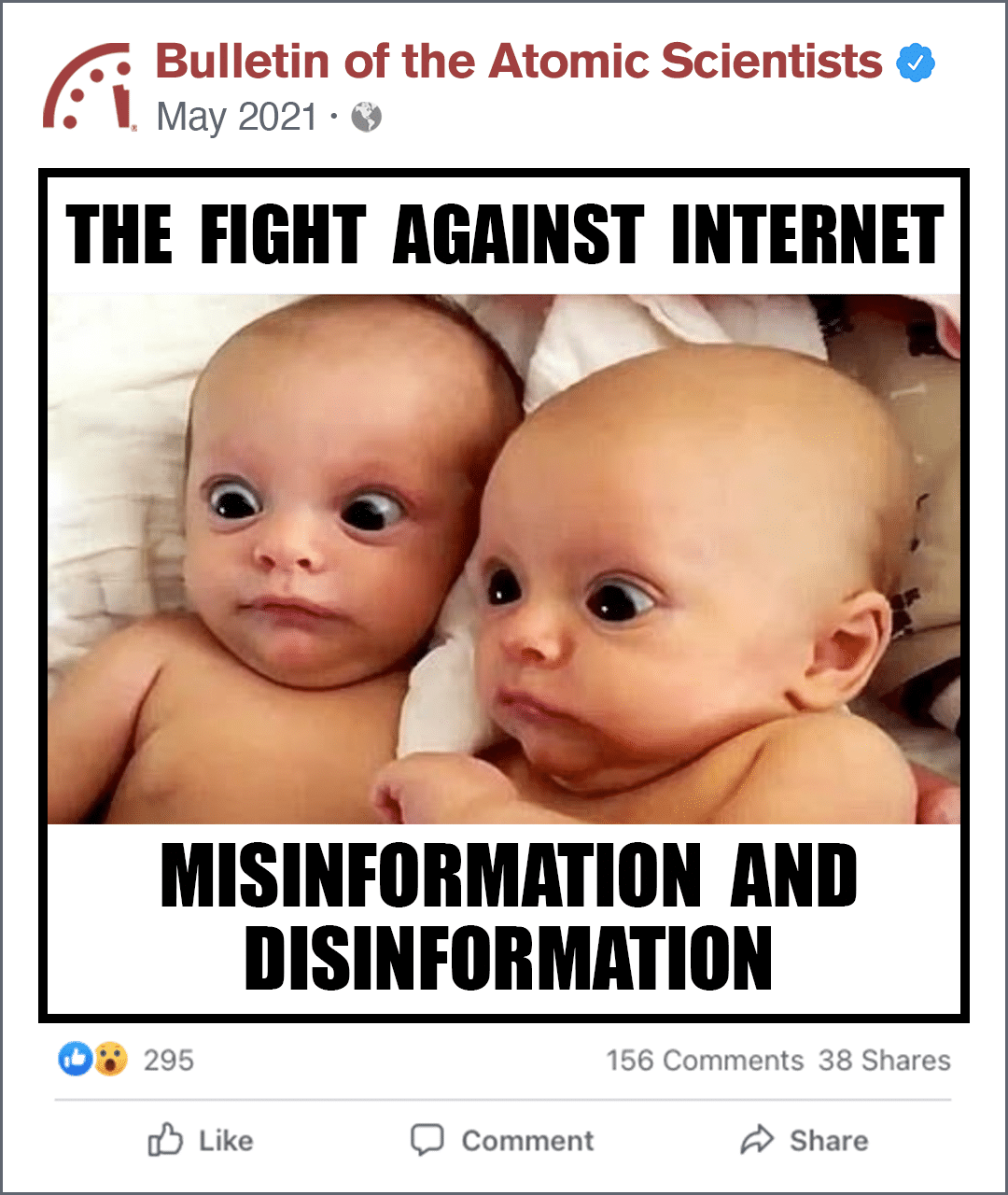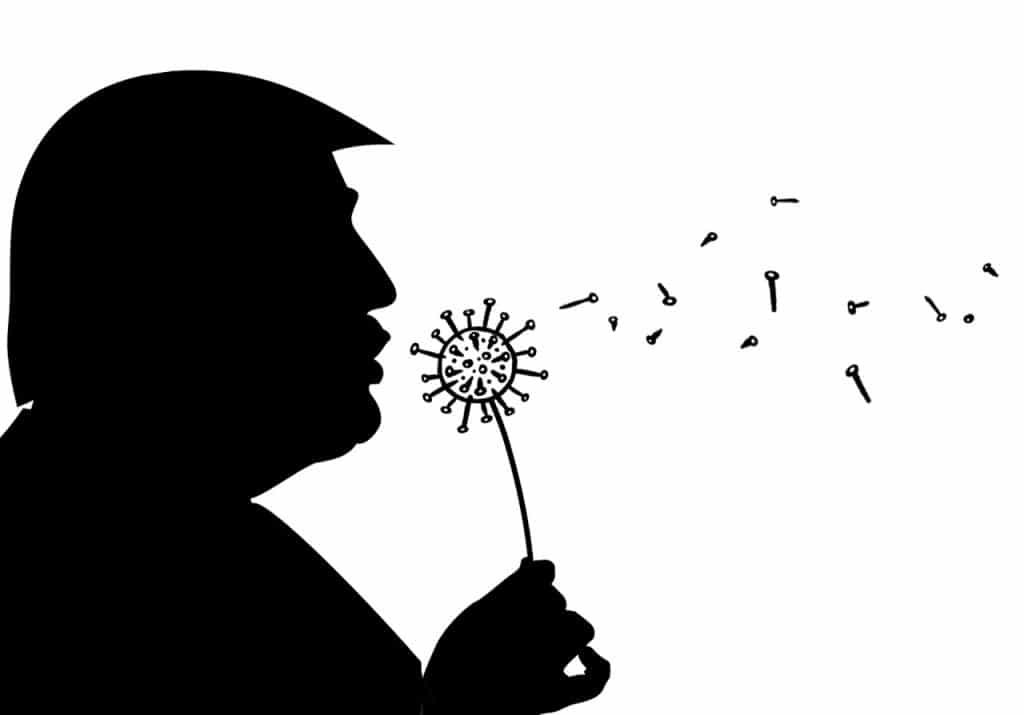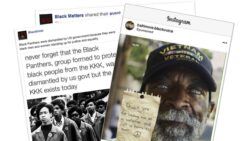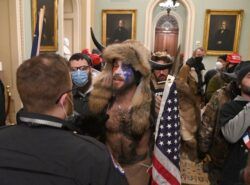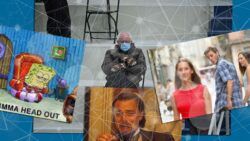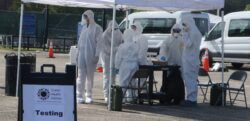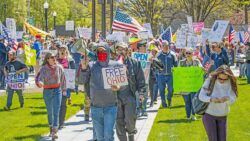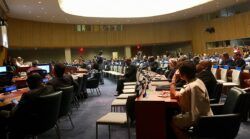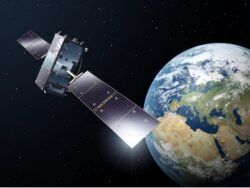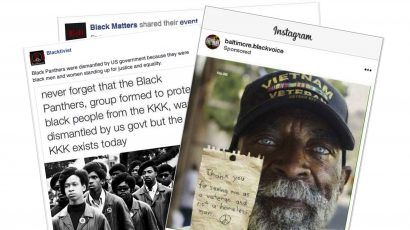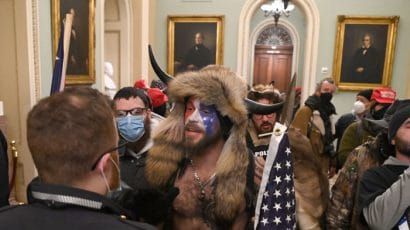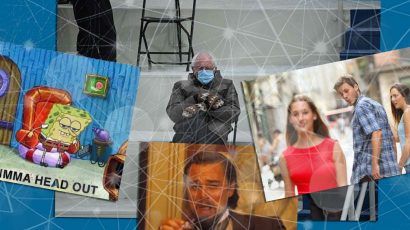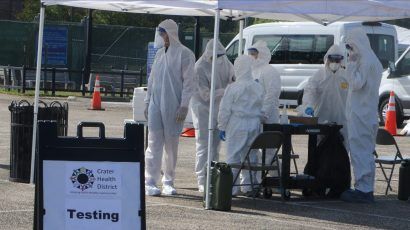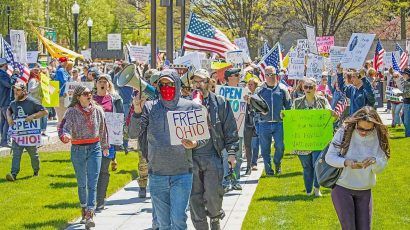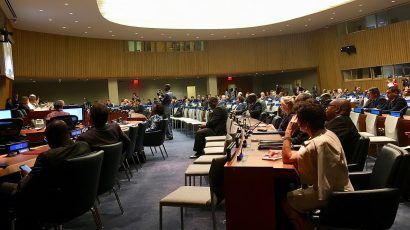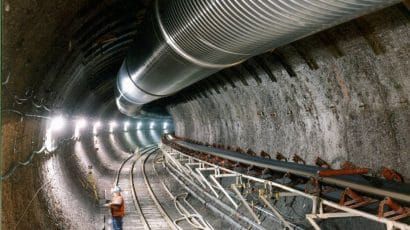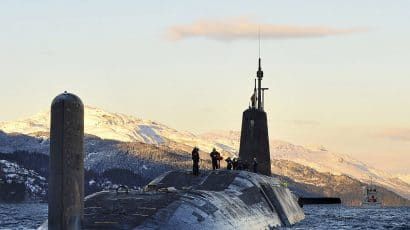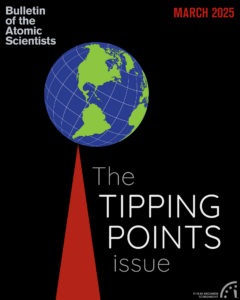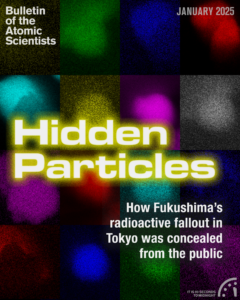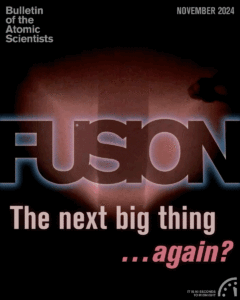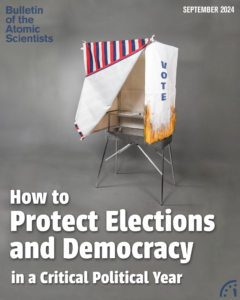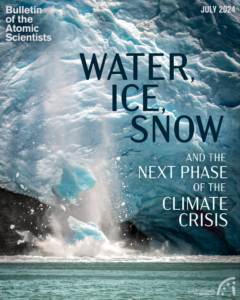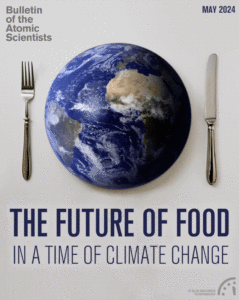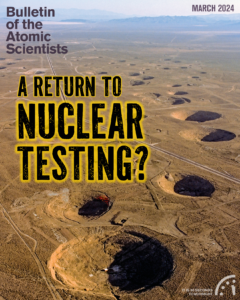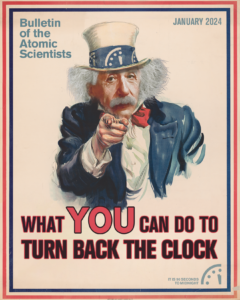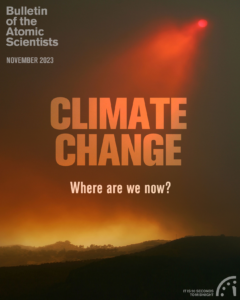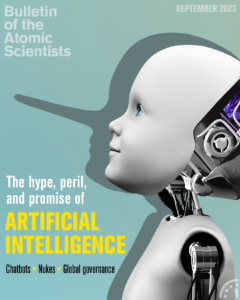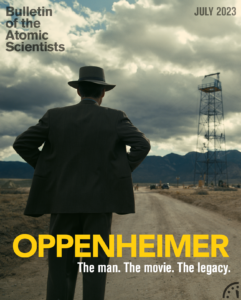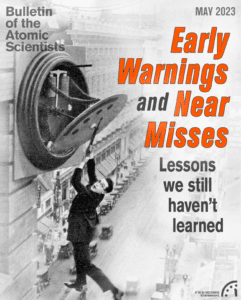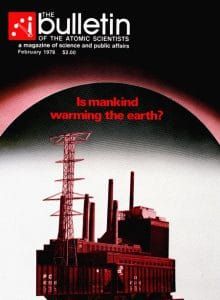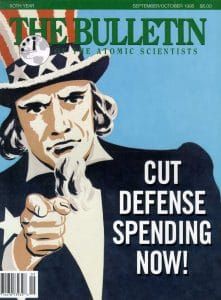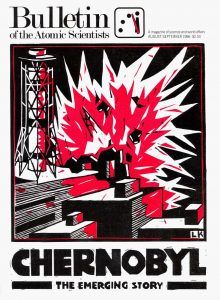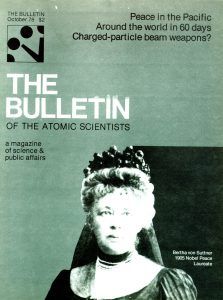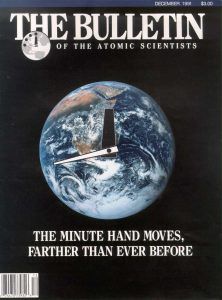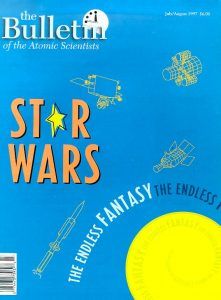DIGITAL MAGAZINE
May 2021
DIGITAL MAGAZINE
May 2021
Introduction: How to dial back a disinformation dystopia
In this introduction to the May 2021 issue of the Bulletin of the Atomic Scientists, editor in chief John Mecklin asked a range of experts for their thoughts on how to begin to limit the worst effects of internet-based mis- and disinformation on public discourse and public policy.
Alan Miller: How the News Literacy Project teaches schoolchildren (and adults) to dismiss and debunk internet disinformation
In this interview, Alan Miller explains how the News Literacy Project came to be and what he thinks needs to happen if the worst impacts of the disinformation tsunami that has swamped the internet in recent years are to be mitigated.
Instead of reforming Facebook, should we just build something else?
Ethan Zuckerman, a professor at the University of Massachusetts Amherst, thinks that there’s a better way to improve social media than simply trying to make companies like Facebook better. Taking his inspiration from public broadcasters like the United Kingdom’s BBC, he advocates for creating perhaps hundreds of thousands of social platforms with a civic purpose rather than a profit motive.
Meme Warfare: AI countermeasures to disinformation should focus on popular, not perfect, fakes
Social media platforms are developing AI systems to automatically remove harmful content primarily through text-based analysis. But these techniques won’t identify all the disinformation on social media. After all, much of what people post are photos, videos, audio recordings, and memes. Developing the entirely new AI systems necessary to detect such multimedia disinformation will be difficult.
Countries have more than 100 laws on the books to combat misinformation. How well do they work?
Since 2015, there has been a huge increase in laws that ostensibly seek to counter misinformation. Since the pandemic began, this trend has only accelerated.
The layered, Swiss cheese model for mitigating online misinformation
In the case of COVID-19, belief in conspiracy theories related to the virus is associated with people being less willing to get vaccinated, potentially putting public health at risk. The good news is that multiple overlapping misinformation interventions, including correcting false information, can help.
Legal and political myths of the Treaty on the Prohibition of Nuclear Weapons
The Treaty on the Prohibition of Nuclear Weapons is an important diplomatic, political, and legal landmark in the longstanding effort to abolish nuclear weapons. It has already been joined by 54 countries but has been rejected by all nuclear weapons states. What legal and political myths surround the treaty’s potential contributions, its relationship to other legally-binding instruments, and its likely future?
Avoiding an unintentional space war: Lessons from Cold War nuclear diplomacy
Given that there has never been a war in space, countries have little experience to draw upon to predict what behavior might motivate a potential competitor to respond with threatening actions—and how quickly and in what manner those actions could escalate to a full-blown conflict. To help control this situation, we may want to take a look at what was done during the Cold War, when concerns about unintentional escalation focused on nuclear weapons.
Opportunities for US-Russian collaboration on the safe disposal of nuclear waste
A group of young Russian and American nuclear professionals surveys the key differences between the Russian and US nuclear waste disposal strategies, identifying specific areas in which collaboration and data sharing could help to resolve important scientific and technical uncertainties.
Nuclear Notebook: How many nuclear weapons does the United Kingdom have in 2021?
Of all the nuclear weapon states, the United Kingdom has moved the furthest toward establishing a minimum nuclear deterrent. The United Kingdom has a stockpile of approximately 225 nuclear warheads, of which up to 120 are operationally available for deployment on four Vanguard-class nuclear-powered ballistic missile submarines (SSBNs). This estimate is based on publicly available … Continued
Alan Miller: How the News Literacy Project teaches schoolchildren (and adults) to dismiss and debunk internet disinformation
In this interview, Alan Miller explains how the News Literacy Project came to be and what he thinks needs to happen if the worst impacts of the disinformation tsunami that has swamped the internet in recent years are to be mitigated.
Instead of reforming Facebook, should we just build something else?
Ethan Zuckerman, a professor at the University of Massachusetts Amherst, thinks that there’s a better way to improve social media than simply trying to make companies like Facebook better. Taking his inspiration from public broadcasters like the United Kingdom’s BBC, he advocates for creating perhaps hundreds of thousands of social platforms with a civic purpose rather than a profit motive.
Meme Warfare: AI countermeasures to disinformation should focus on popular, not perfect, fakes
Social media platforms are developing AI systems to automatically remove harmful content primarily through text-based analysis. But these techniques won’t identify all the disinformation on social media. After all, much of what people post are photos, videos, audio recordings, and memes. Developing the entirely new AI systems necessary to detect such multimedia disinformation will be difficult.
Countries have more than 100 laws on the books to combat misinformation. How well do they work?
Since 2015, there has been a huge increase in laws that ostensibly seek to counter misinformation. Since the pandemic began, this trend has only accelerated.
The layered, Swiss cheese model for mitigating online misinformation
In the case of COVID-19, belief in conspiracy theories related to the virus is associated with people being less willing to get vaccinated, potentially putting public health at risk. The good news is that multiple overlapping misinformation interventions, including correcting false information, can help.
Legal and political myths of the Treaty on the Prohibition of Nuclear Weapons
The Treaty on the Prohibition of Nuclear Weapons is an important diplomatic, political, and legal landmark in the longstanding effort to abolish nuclear weapons. It has already been joined by 54 countries but has been rejected by all nuclear weapons states. What legal and political myths surround the treaty’s potential contributions, its relationship to other legally-binding instruments, and its likely future?
Avoiding an unintentional space war: Lessons from Cold War nuclear diplomacy
Given that there has never been a war in space, countries have little experience to draw upon to predict what behavior might motivate a potential competitor to respond with threatening actions—and how quickly and in what manner those actions could escalate to a full-blown conflict. To help control this situation, we may want to take a look at what was done during the Cold War, when concerns about unintentional escalation focused on nuclear weapons.
Opportunities for US-Russian collaboration on the safe disposal of nuclear waste
A group of young Russian and American nuclear professionals surveys the key differences between the Russian and US nuclear waste disposal strategies, identifying specific areas in which collaboration and data sharing could help to resolve important scientific and technical uncertainties.
Nuclear Notebook: How many nuclear weapons does the United Kingdom have in 2021?
Of all the nuclear weapon states, the United Kingdom has moved the furthest toward establishing a minimum nuclear deterrent. The United Kingdom has a stockpile of approximately 225 nuclear warheads, of which up to 120 are operationally available for deployment on four Vanguard-class nuclear-powered ballistic missile submarines (SSBNs). This estimate is based on publicly available … Continued
Subscribe now
We've relaunched the Bulletin's award-winning digital magazine. Get access to every issue and our archive going back to 1945.
Magazine archive
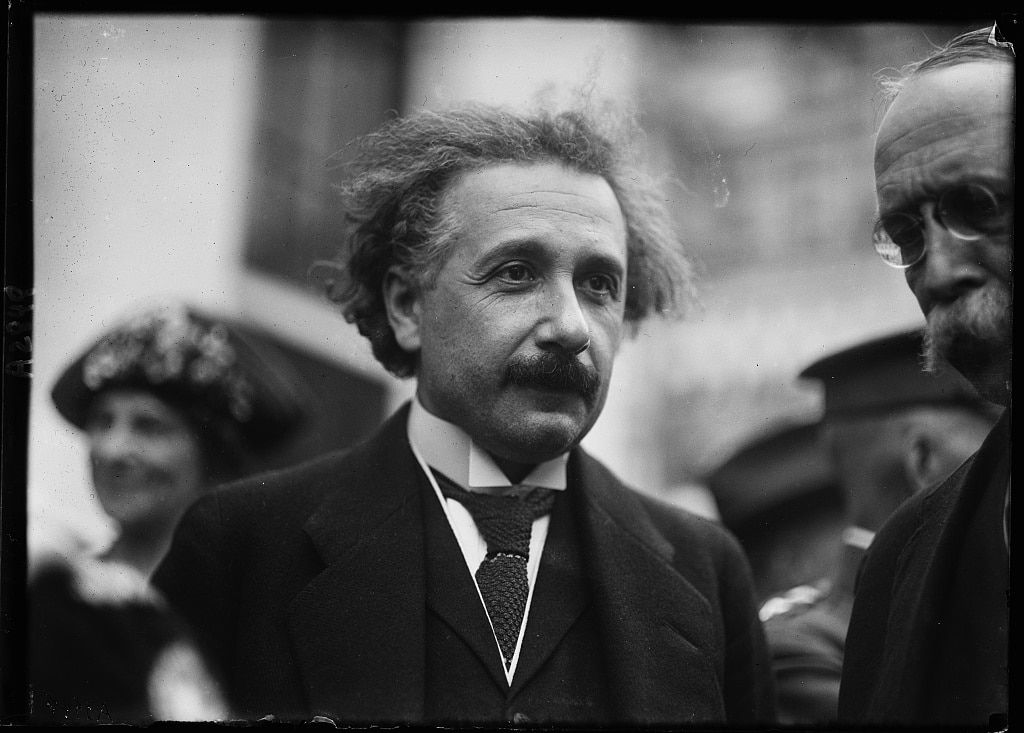
Premium subscribers can read the complete Bulletin of the Atomic Scientists’ archive, which contains every article published since our founding in 1945.
This archive was created in honor of John A. Simpson, one of the Bulletin’s principal founders and a longtime member of its Board of Sponsors. This searchable archive provides exclusive online access to original interviews and commentary by luminaries like Albert Einstein, J. Robert Oppenheimer, Ruth Adams, John F. Kennedy, Stephen Hawking, Christine Todd Whitman, US Secretary of Defense William J. Perry, and multiple Nobel laureates.
